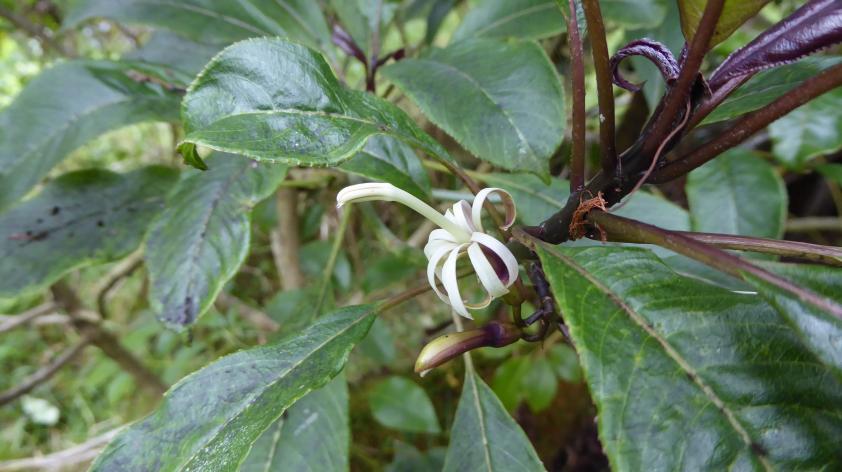
The ‘Alalā’s Favorite Fruits: ‘Ōhā Wai
The ‘alalā, also known as the Hawaiian Crow (Corvus hawaiiensis) may look very similar to mainland crows and ravens but something important sets them apart. ‘Alalā love to eat fruit! Along with small arthropods that they glean from under tree bark and substrate in the forest, eggs and nestlings of small forest bird species, fruit is a large component of their natural diet. Unfortunately the ‘alalā are currently extinct in the wild but their numbers are climbing, today a little over 100 individuals currently exist in captivity.
While the captive ‘alalā diet is mostly made up of commercial fruits like papaya, apple and melon, we like to supplement them with native Hawaiian plant items whenever possible. Here at the Keauhou Bird Conservation Center we are lucky to be located right in the middle of a regenerating Hawaiian forest. Several native fruits that the ‘alalā can eat are easily found growing on property. One fruiting plant in particular is ‘ōhā wai, which is the Hawaiian name for Clermontia.
There are 22 species of ‘ōhā wai and they are extremely special because they are endemic to the Hawaiian Islands. This means they can’t be found anywhere else in the world! They are a very important plant in the understory of the Hawaiian forest, the nectar and fruit are a good food source for birds and a host for certain insects. The plants themselves are usually branched shrubs or small trees. Unfortunately some species are endangered. Competition from alien grasses, cattle browsing and rats predating on the fruits are some of the threats that ‘ōhā wai has to endure. I recently collected (Clermontia parviflora) from here at the Keauhou Bird Conservation Center. This is one of the more common species of ‘ōhā wai. Mostly white with some light purple coloring, the flowers aren’t big but they’ll easily catch your eye. The fleshy fruits are pumpkin colored, and when opened up, tons of tiny black colored seeds emerge.
I was excited to give a handful of the ‘ōhā wai fruit to a pair of captive ‘alalā because I was pretty sure they had never had this fruit before. Instead of being wary of the new food item, which ‘alalā sometimes tend to be; it was interesting to see that it took only seconds for the pair to come down the log where I had set the fruit. The young two-year-old female came down and immediately picked up a fruit and swallowed it! After that her mate started picking up the fruit as well.
The ‘alalā are the largest forest bird left in Hawaii. Thanks to their love of fruit (they like to eat over 30 different species!) they help the forest thrive by dispersing seeds far and wide. The Hawaiian forest needs the ‘alalā, without them large fruiting plants like ‘ōhā wai might be limited in how far they can disperse their seeds.













